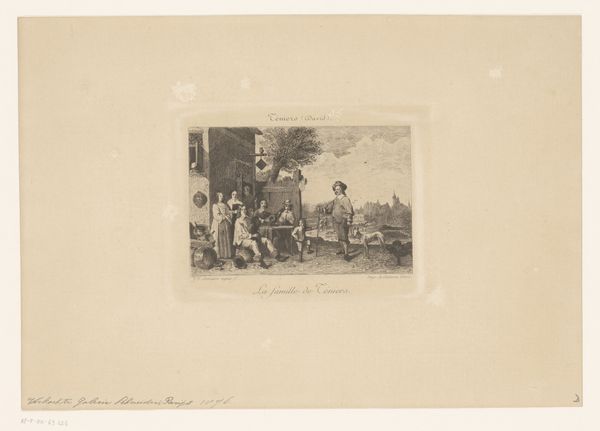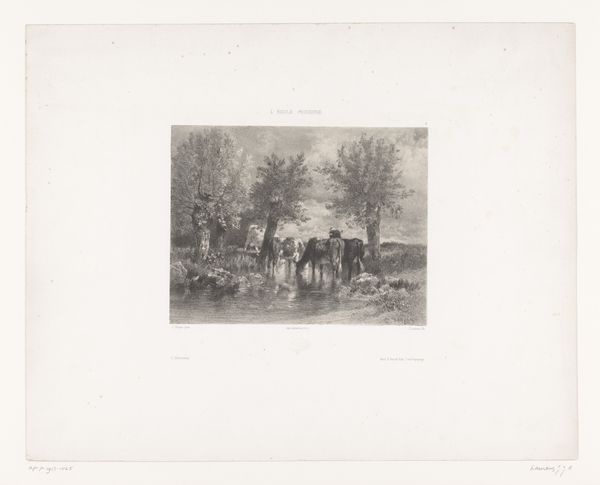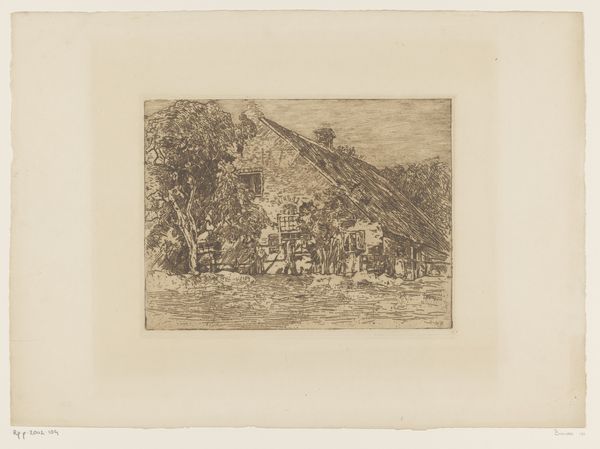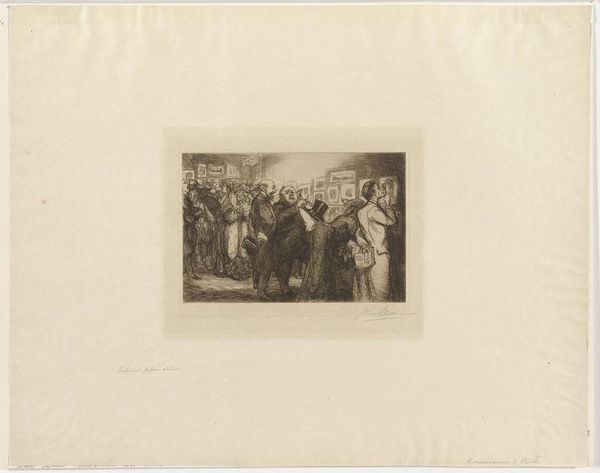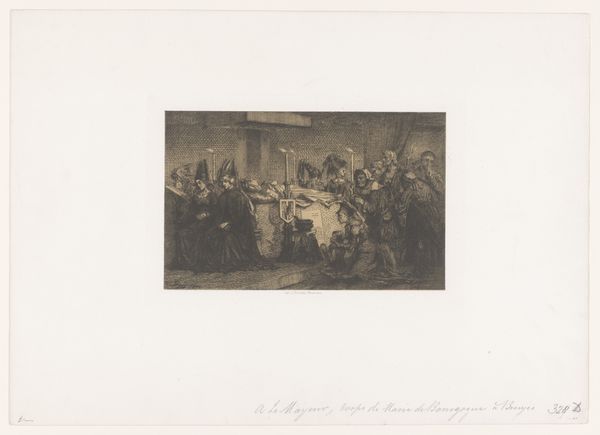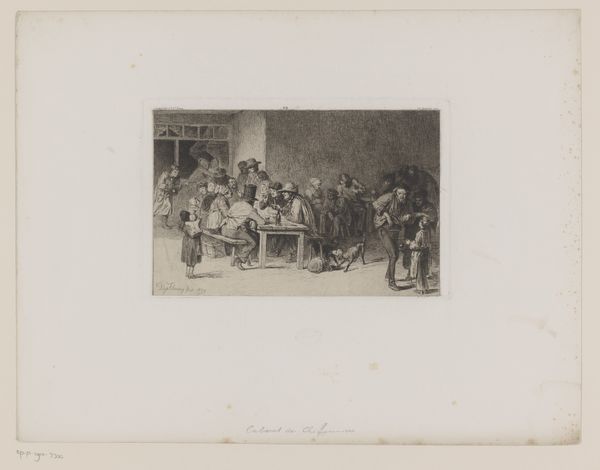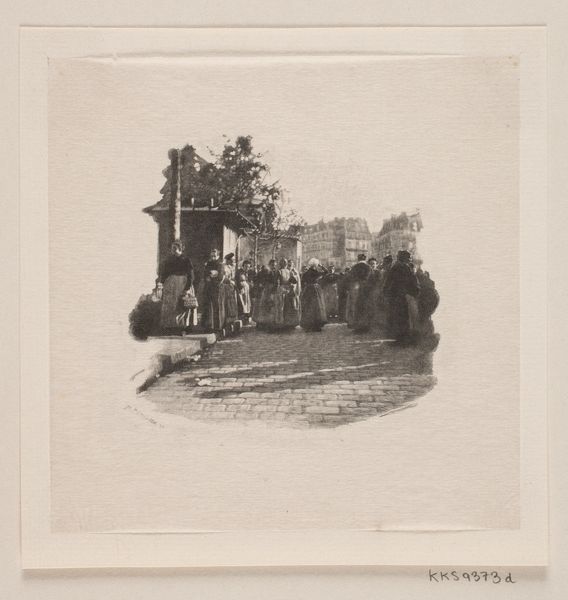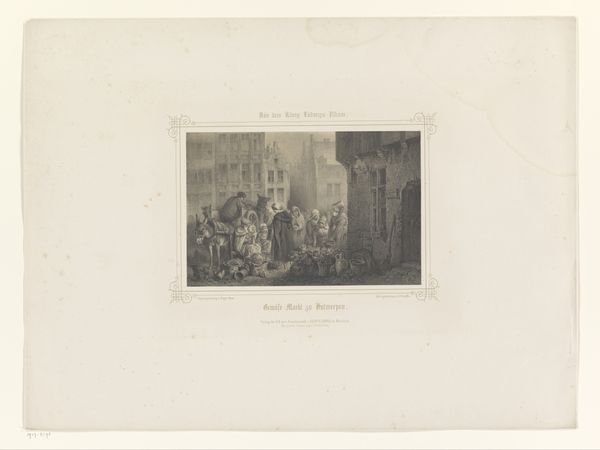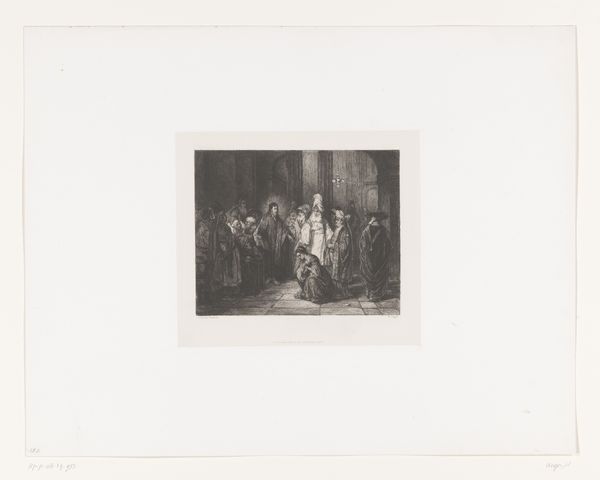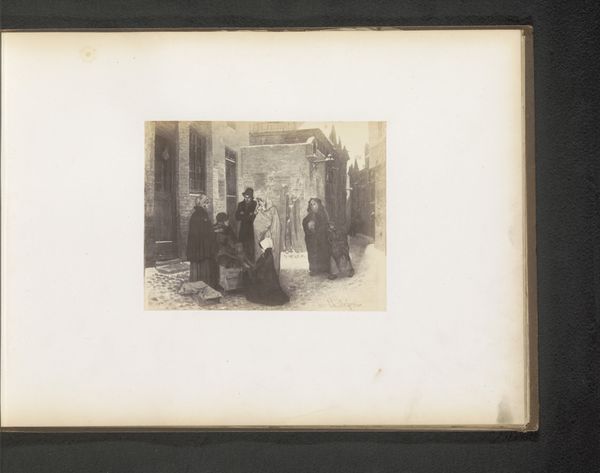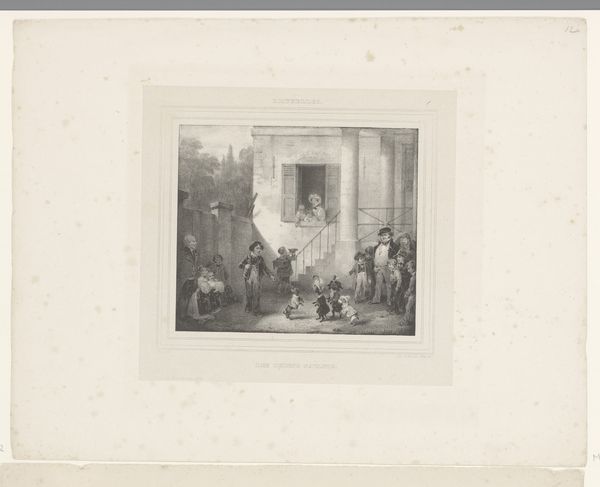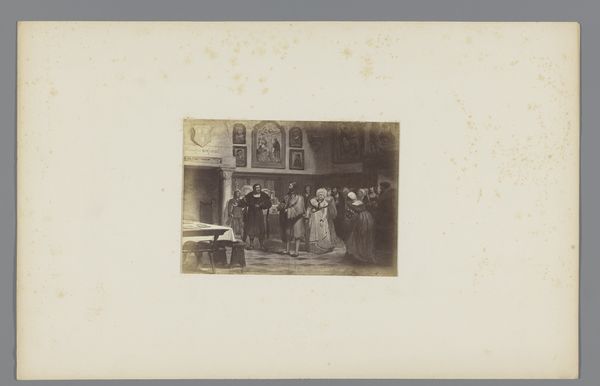
print, etching
#
water colours
#
dutch-golden-age
# print
#
etching
#
landscape
#
genre-painting
Dimensions: height 149 mm, width 224 mm
Copyright: Rijks Museum: Open Domain
Curator: Let’s consider Willem de Zwart's "Boeren op een dorpsmarkt," an etching from around 1897-1898. This print captures a bustling village market scene. Editor: It's intriguing! The sepia tones create this immediate vintage feeling, like looking into the past. I’m drawn to the implied texture from the etching. What speaks to you about this work? Curator: I see this etching as a commentary on labor and exchange within a specific social context. Etchings allowed for relatively inexpensive reproduction, widening access. So who was this market serving? What was being traded, and how did the material conditions of rural life shape these interactions? Consider the labor involved in creating both the goods at market and the artwork itself. Editor: That’s fascinating. I hadn’t really thought about the etching *process* as integral to the meaning, but how the method influences who the artwork reaches. Curator: Precisely! Look closely at the lines. What does their density and direction suggest about de Zwart’s process? Are some areas more worked than others? Where does he want your eye to focus, and how does his handling of the materials contribute to that? Editor: It does look like more detail has been put into the central group, drawing your eye to what I now perceive is a meeting point of exchange! Curator: Right, and by analyzing the etching's production and consumption, we understand art less as individual genius and more as embedded within a web of social and economic relations. This reframes what art "is" to include these very human connections. What do you make of that now? Editor: It definitely shifts my perspective! Thinking about who *makes* and who *receives* art based on its materiality reveals more about society than I expected. Thanks!
Comments
No comments
Be the first to comment and join the conversation on the ultimate creative platform.

